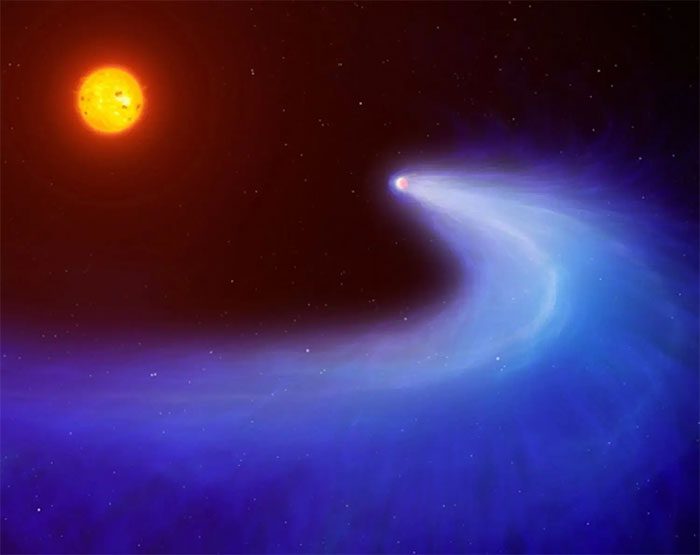The stunning tail of a giant planet located 160 million light-years from Earth conceals a deadly truth.
Data from the Calar Alto Observatory in Spain and the Palomar Observatory in the United States has revealed the unique appearance of the planet known as WASP-69b: It has a tail longer than 560,000 km, which is seven times its own diameter, making it look like a bizarre dragon flying through space.
According to SciTech Daily, WASP-69b was first discovered a decade ago. It is classified as a hot Jupiter, a type of gas giant similar to Jupiter in our Solar System, but situated too close to its parent star, resulting in high temperatures.

A “dragon-tailed planet” – (Graphic: NBC NEWS).
WASP-69b has a precarious orbit, completing a revolution around its parent star in less than 4 Earth days.
While hot Jupiters are not uncommon and are relatively well-known, new data indicates that WASP-69b is particularly special.
A recent study published in the journal Astrophysical Journal reveals that this tail is actually the planet’s atmosphere being gradually stripped away by its parent star.
Several planets with damaged atmospheres due to their parent stars have been previously discovered, often experiencing a brutal and rapid stripping process.
However, according to the research team from the University of California, Los Angeles (UCLA), the parent star of WASP-69b is not only stripping away this atmosphere with high-energy radiation, but also paradoxically shielding it.
The complex interaction of stellar winds has caused the gases in the atmosphere to be gradually stripped away, forming the long tail over time.
Nevertheless, the evaporation rate reaches up to 200,000 tons of gas per second.
Despite the terrifying reality of the “dragon tail”, this planet, which has a mass 90 times that of Earth, is not at risk of losing its entire atmosphere. Scientists predict that the parent star will die out before it can accomplish that.
Additionally, as a hot Jupiter, the planet is inhospitable for life, making it unlikely that any organisms would be affected by the brutal atmospheric stripping behavior of the parent star.



















































